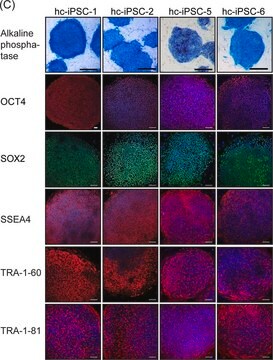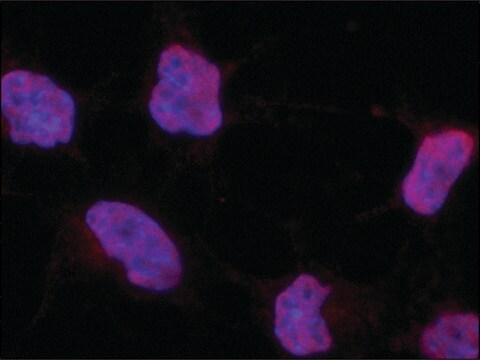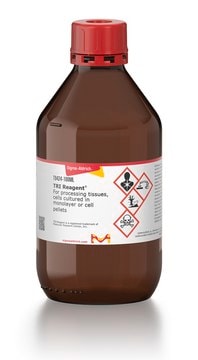MAB4401
Anti-Oct-4 Antibody, clone 10H11.2
clone 10H11.2, Chemicon®, from mouse
Synonym(e):
Octamer-binding transcription factor 3, POU class 5 homeobox 1, POU domain class 5, transcription factor 1, POU domain, class 5, transcription factor 1, POU-type homeodomain-containing DNA-binding protein, octamer-binding transcription factor-3
About This Item
Empfohlene Produkte
Biologische Quelle
mouse
Antikörperform
purified antibody
Klon
10H11.2, monoclonal
Speziesreaktivität
human
Hersteller/Markenname
Chemicon®
Methode(n)
ELISA: suitable
flow cytometry: suitable
immunocytochemistry: suitable
western blot: suitable
Aufnahme
sample type induced pluripotent stem cell(s)
sample type: human embryonic stem cell(s)
Isotyp
IgG1
NCBI-Hinterlegungsnummer
UniProt-Hinterlegungsnummer
Versandbedingung
wet ice
Posttranslationale Modifikation Target
unmodified
Angaben zum Gen
human ... POU5F1(5460)
Allgemeine Beschreibung
Spezifität
Anwendung
ELISA: A previous lot of this antibody was used in ELISA.
Immunocytochemistry: A previous lot of this antibody was used in IC. H9 cells in culture on a mouse embronic fibroblast feeder layer were labeled by a standard indirect IF protocol. Oct-4 labelling in green, DAPI in blue, & SSEA-3 (MAB4303 in red).
Optimal working dilutions must be determined by the end user.
Qualität
Western Blotting: 1:500 dilution of this antibody detected Oct-4 on 10 µg of mouse P1 brain lysates
Zielbeschreibung
Physikalische Form
Hinweis zur Analyse
Human embryonic stem cell lysate.
Sonstige Hinweise
Rechtliche Hinweise
Empfehlung
Lagerklassenschlüssel
12 - Non Combustible Liquids
WGK
WGK 2
Flammpunkt (°C)
Not applicable
Analysenzertifikate (COA)
Suchen Sie nach Analysenzertifikate (COA), indem Sie die Lot-/Chargennummer des Produkts eingeben. Lot- und Chargennummern sind auf dem Produktetikett hinter den Wörtern ‘Lot’ oder ‘Batch’ (Lot oder Charge) zu finden.
Besitzen Sie dieses Produkt bereits?
In der Dokumentenbibliothek finden Sie die Dokumentation zu den Produkten, die Sie kürzlich erworben haben.
Artikel
Skip weekend feedings. Defined serum-free and feeder-free expansion media for human pluripotent stem cells (ES and iPS cells). See publications and protocols.
Fibroblast growth factors (FGFs) are secreted glycoproteins that regulate several fundamental developmental pathways and help regulate mesoderm and ectoderm patterning in the early embryonic development.
Human iPSC neural differentiation media and protocols used to generate neural stem cells, neurons and glial cell types.
The Simplicon™ RNA Reprogramming Technology is a next generation reprogramming system that uses a single synthetic, polycistronic self-replicating RNA strand engineered to mimic cellular RNA to generate human iPS cells.
Unser Team von Wissenschaftlern verfügt über Erfahrung in allen Forschungsbereichen einschließlich Life Science, Materialwissenschaften, chemischer Synthese, Chromatographie, Analytik und vielen mehr..
Setzen Sie sich mit dem technischen Dienst in Verbindung.![Anti-OCT-4-[POU5F1-]Antikörper, Klon 7F9.2 clone 7F9.2, from mouse](/deepweb/assets/sigmaaldrich/product/images/307/874/7354f72d-80ee-40a5-b7fa-0590fe6784cc/640/7354f72d-80ee-40a5-b7fa-0590fe6784cc.jpg)








